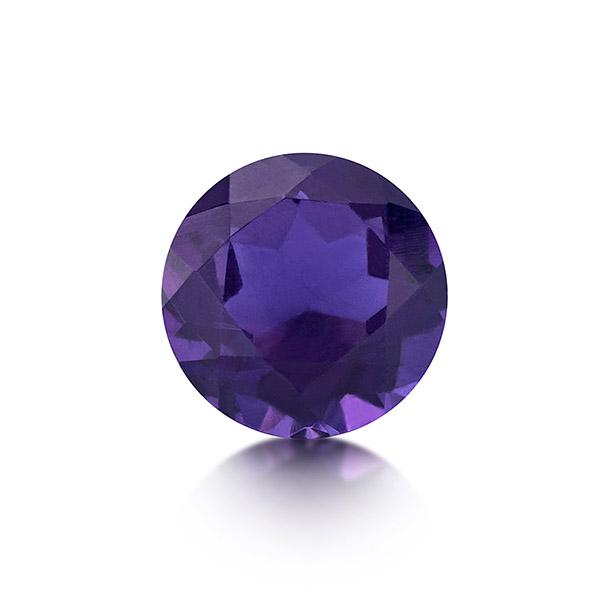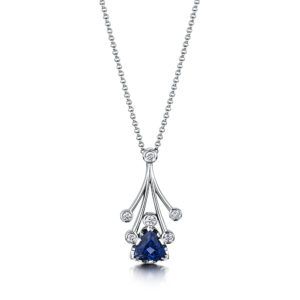

Iolite Key Facts
- 7-7.5 on the Mohs scale of hardness
- Mined chiefly in Sri Lanka and Myanmar
- Colours vary from violet to blue-green to grey
- Also known as a ‘water sapphire’
- Said to represent happiness and joy
General Information on Iolite
Iolite is actually the gem quality version of Corderite, which was named after the French geologist Pierre L.A. Cordier, who first described it in 1813. It is also known as ‘water sapphire’ because of its lovely pale bluish colours that can vary from violet to a blue-green or grey.
Iolite is pleochroic, which means it shows different colours when viewed from different angles. The best blue colour is seen when viewed down the length if the crystal; when viewed across the crystal it can appear almost colourless. Tanzanite is a blue-violet gemstone variety of the mineral zoisite, has strong pleochroism as well and can be easily confused with iolite. However, tanzanite is usually more strongly coloured, its pleochroic colours vary from dark blue, green-yellow and red-purple and it has greater fire. The pleochroism exhibited in both these stones makes a gem cutters job very hard work!
So far, no treatments have been successfully used to lighten colour or to remove inclusions, so one can assume that all gems are untreated.
Iolite is found in Sri Lanka and Myanmar primarily, but large, flawless pieces have also been found on Garnet Island in Canada. Some are up to 5cm long! Iolite is also found in Madagascar, Tanzania, Brazil and South Africa.
Iolites are fairly brittle, exhibiting conchoidal tendencies (breakages look like sea shells) or uneven fractures, so they are also difficult to find in square cuts like baguettes and princess cuts. Highly faceted cuts like the brilliant cut are particularly good for pale stones like iolite as they seem to concentrate the colour, making it look stronger, darker, and more sparkly.

